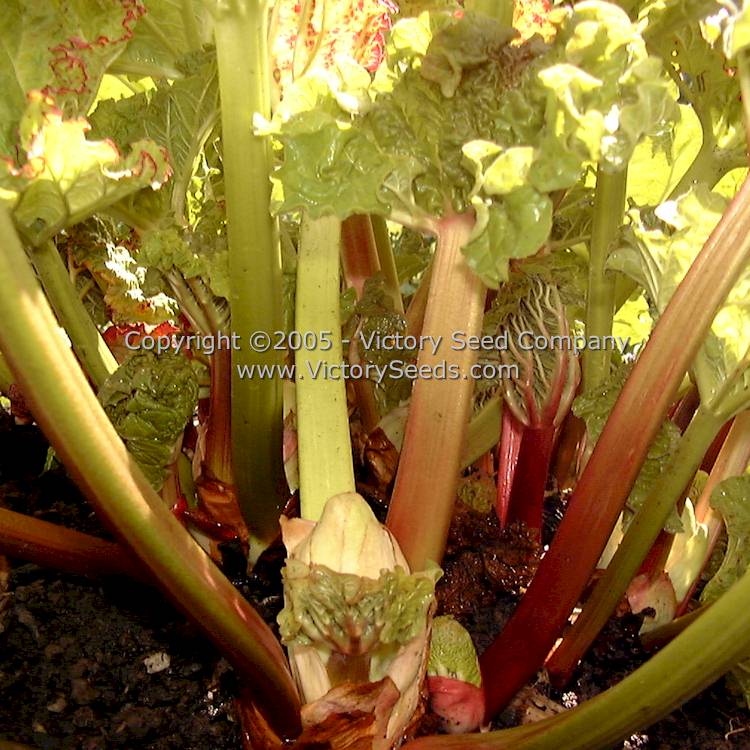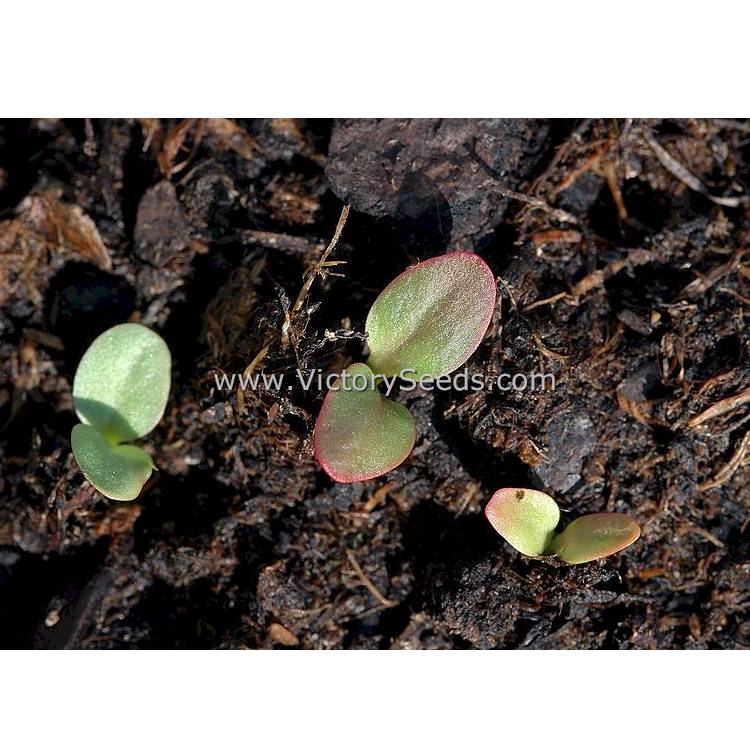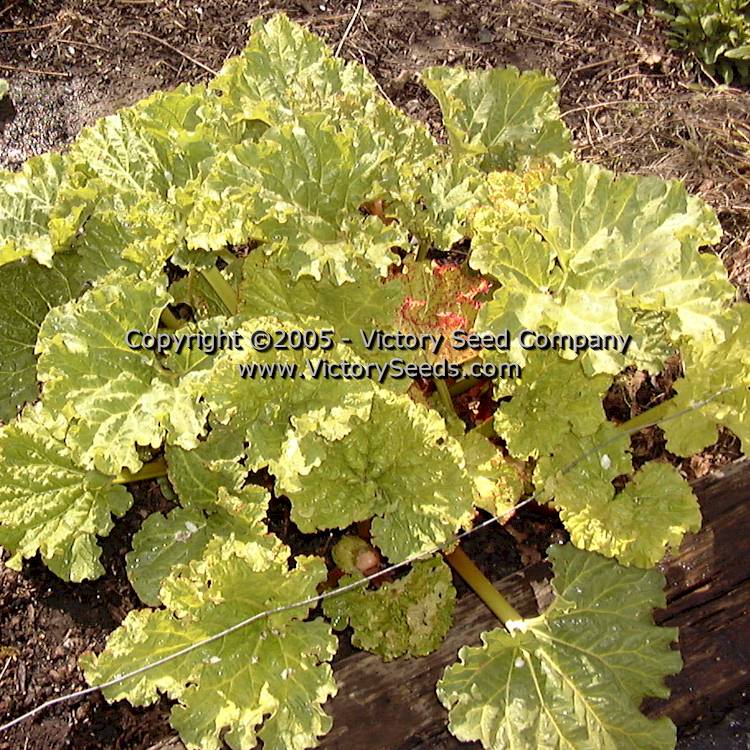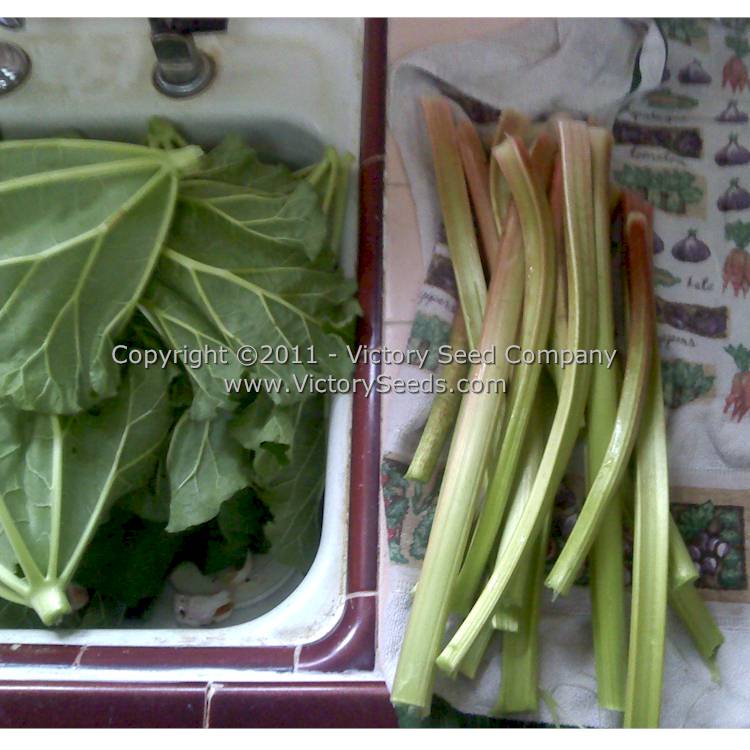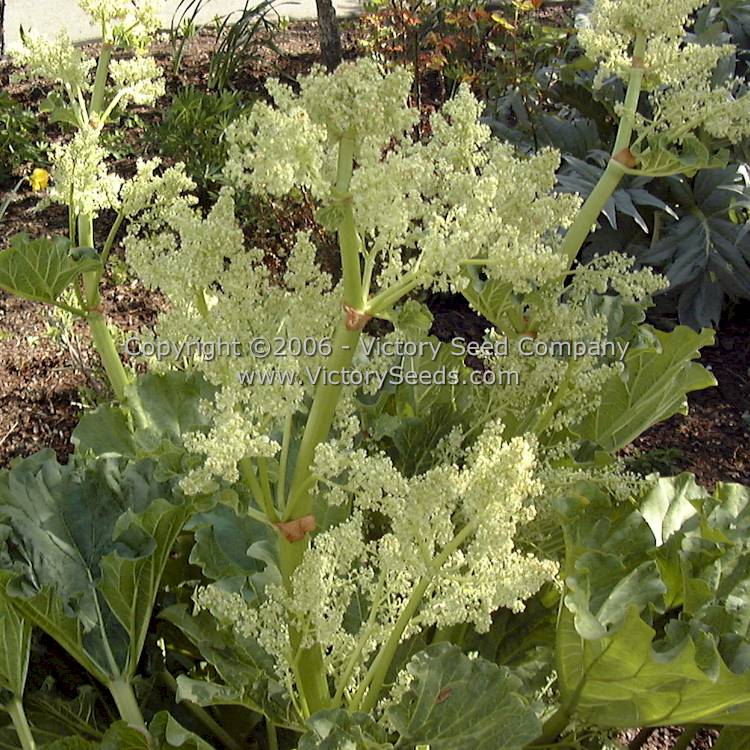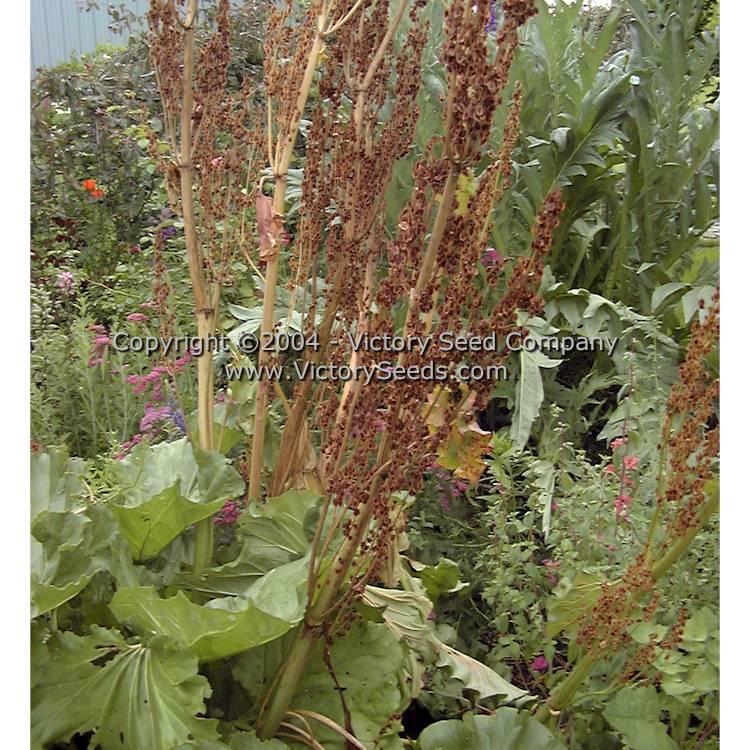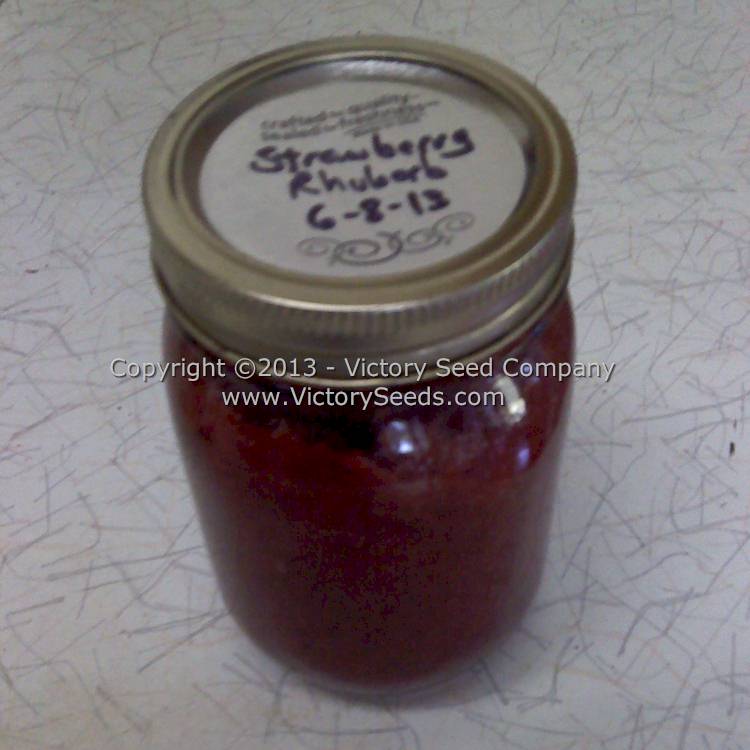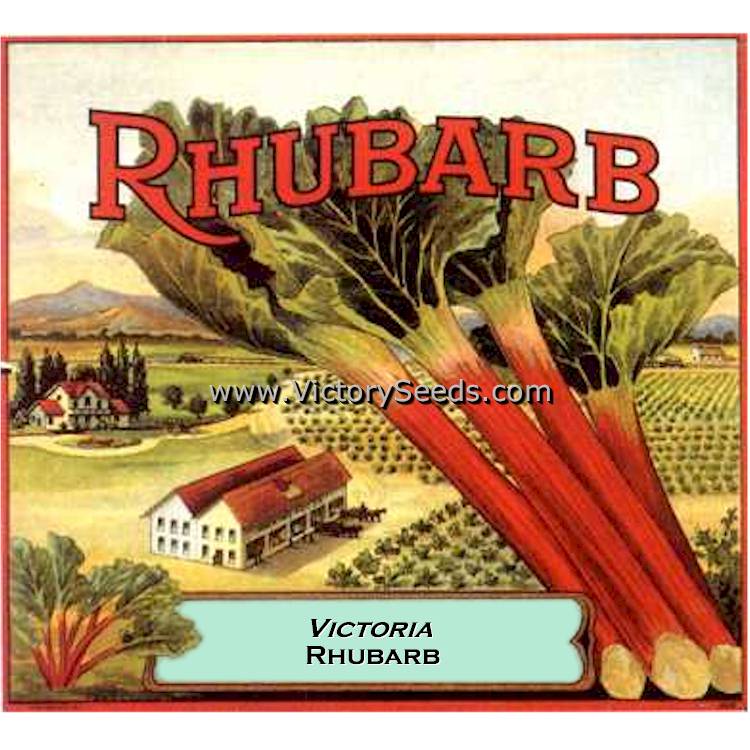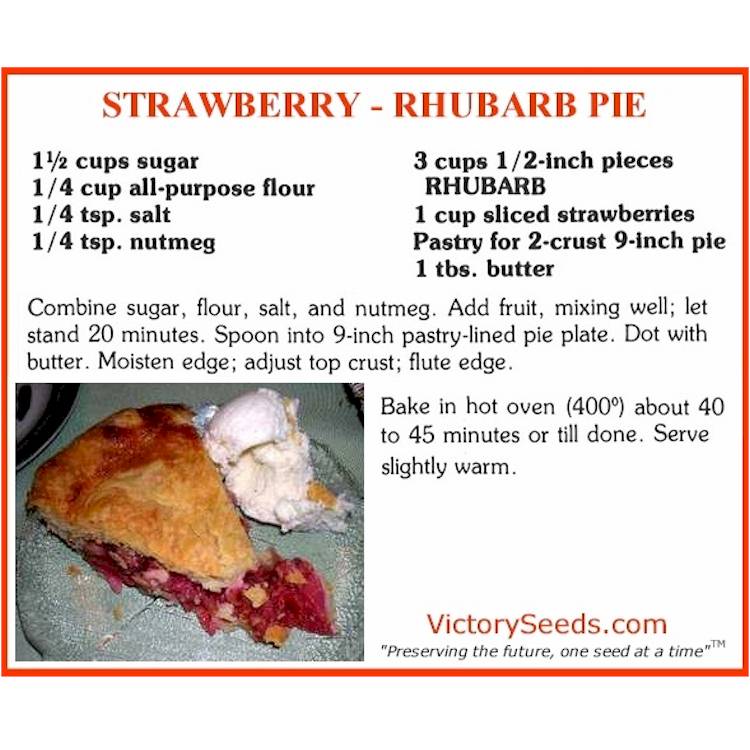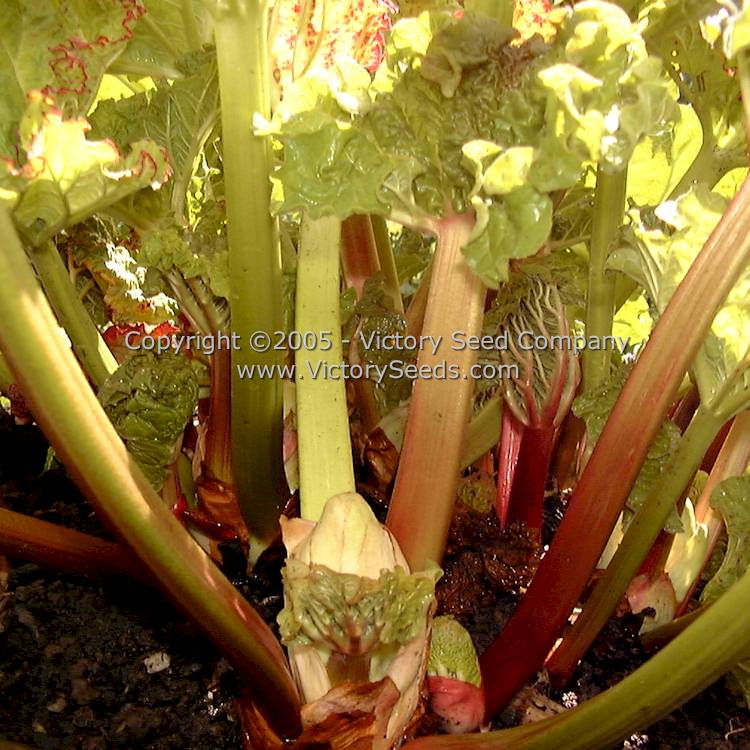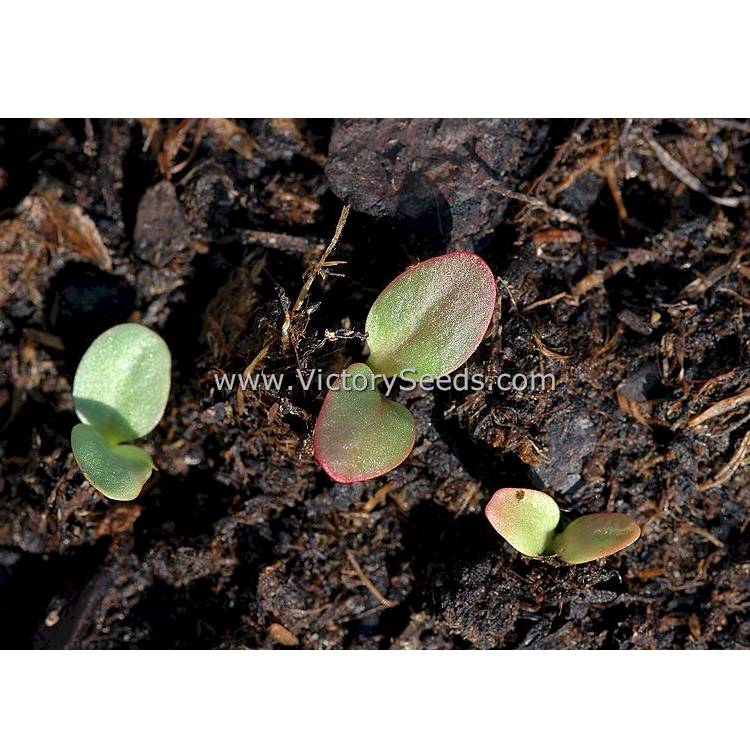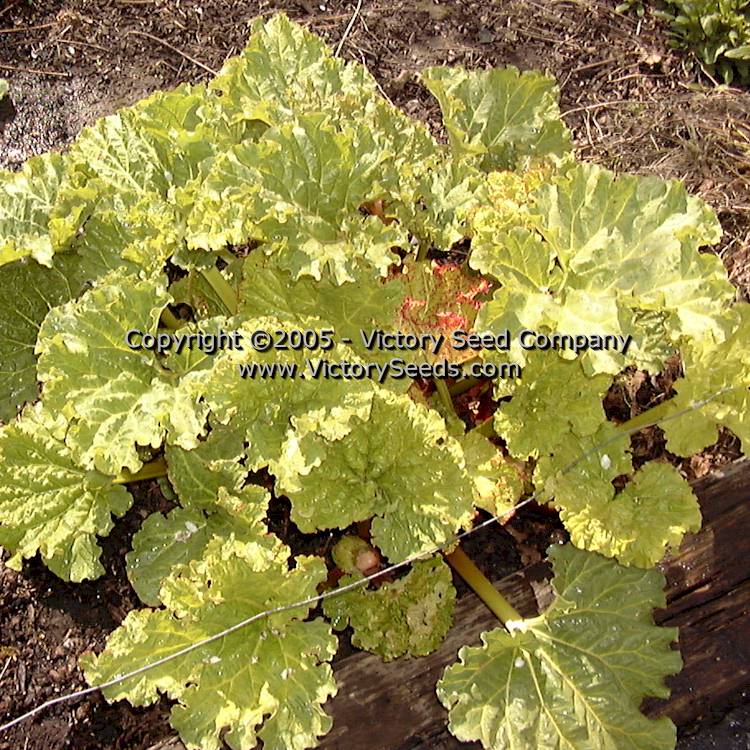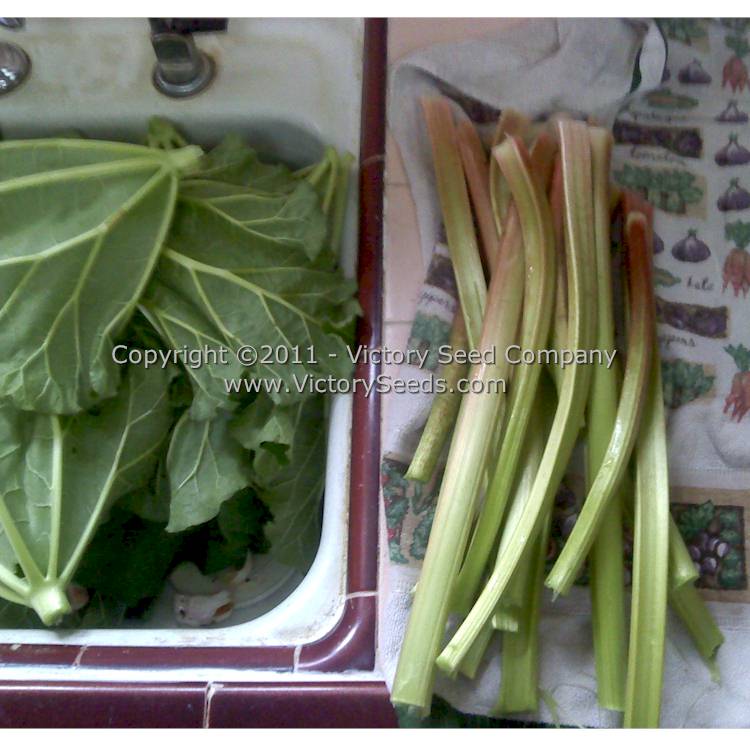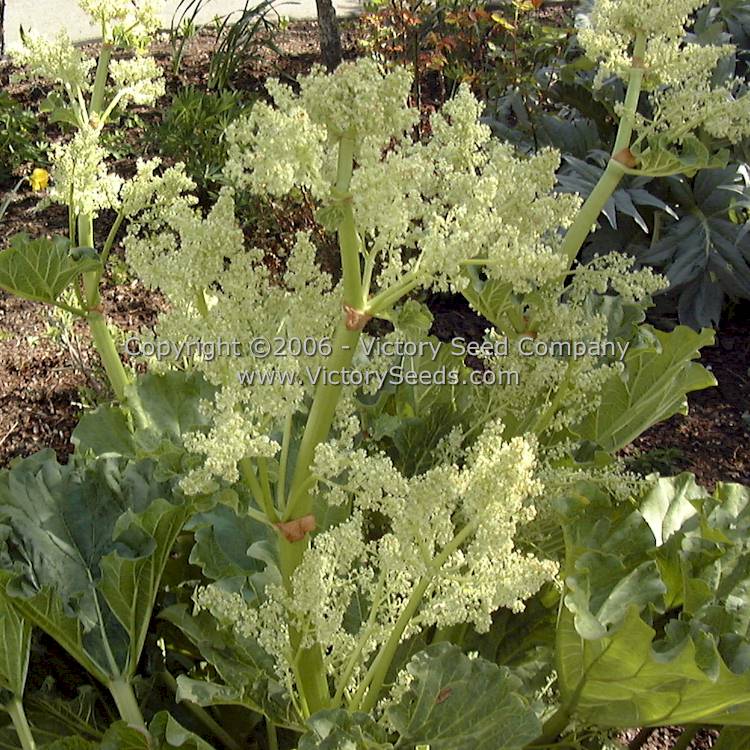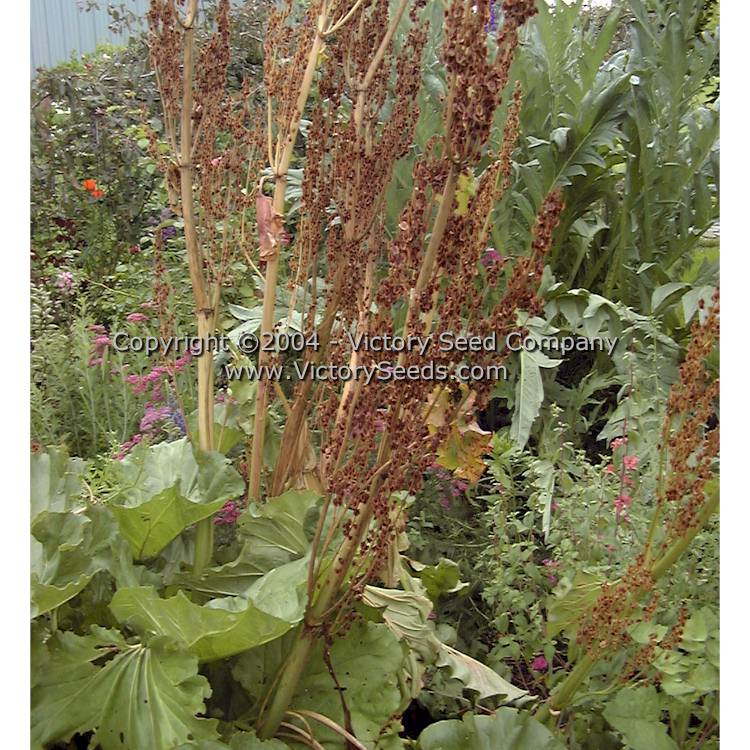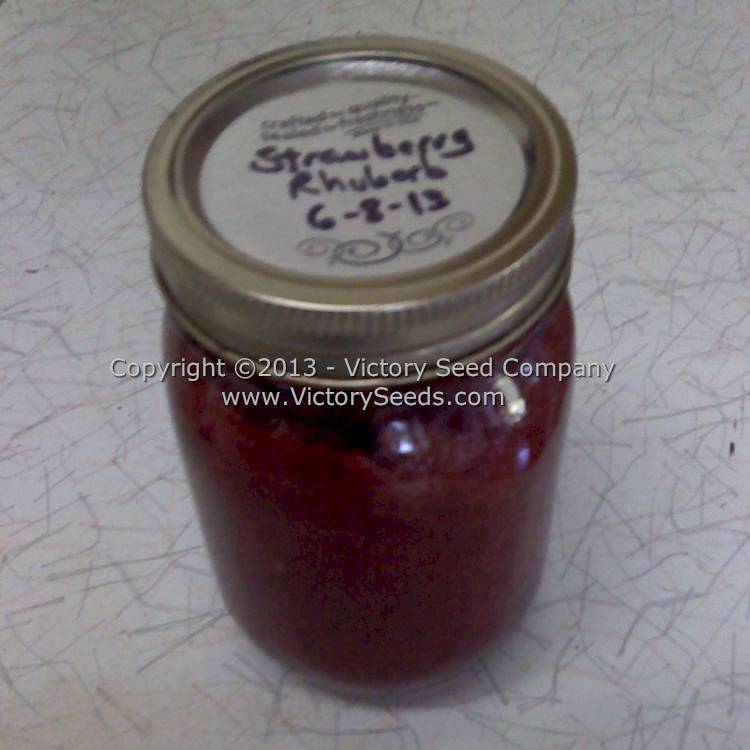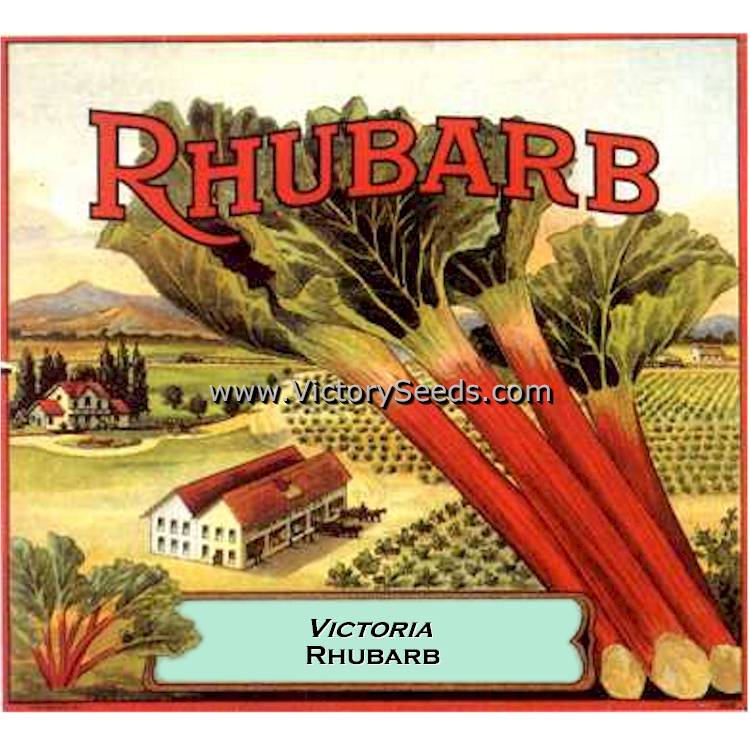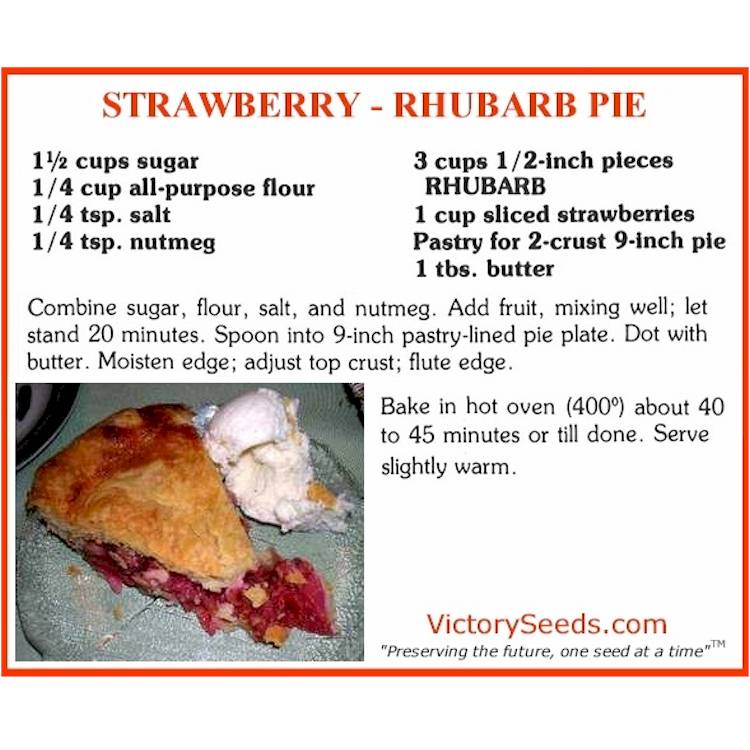Victoria Rhubarb
Victoria Rhubarb
Regular price
$2.95 USD
Regular price
Sale price
$2.95 USD
Unit price
per
Shipping calculated at checkout.
Couldn't load pickup availability
Victoria
Rheum rhabarbarum
'Victoria' is an old standard crop variety of rhubarb and one that we raise in our "Victory Garden" here on the farm. It has proven to be one of the largest and most productive varieties available. The stalks are a deep crimson red with a touch of green on the inside. The hint of a wine flavor makes it a good variety to use for pies and cobblers. First recorded in 1837 in England. Rheum rhabarbarum
Rhubarb is a garden anchor commonly found around old farmsteads and farm houses; particularly in northern climates. It is long-lived and typically grown by dividing mature plant crowns. We have plants on our farm that we started from seed over twenty years ago, as well as some plants that my grandmother grew putting them in the sixty to eighty year-old range.
Starting plants from seed is not difficult (refer to the information in the "Cultivation / Harvest Information" tab below) but you will need to plant at least twenty seeds to cull out ones that do not exhibit the desired traits for the variety. For the average family, three plants is generally sufficient to meet their needs. Click here for our Strawberry-Rhubarb Pie recipe.
Each packet contains one gram, which is approximately 60 seeds.
Cultivation: Sow seeds ¼-inch deep in sterile seed starting mix, indoors, six to eight weeks prior to last frost. After hardening off, transplant into deeply cultivated, well-drained beds into which generous amounts of organic matter and composted manure have been added. Final spacing should be eighteen to twenty four inches.
Rhubarb is a cool season crop that requires temperatures below 40°F to break dormancy and to stimulate good spring growth. For growth to remain vigorous, summer temperatures should average less than 75°F. This means that the Northern U.S. and Canada are best suited for rhubarb production.
It is best to wait until the second year before harvesting stalks and even then, be conservative so as not to put undue stress on the developing root systems. Pull the stalks with a slight twisting motion instead of cutting. Remove flower stalks as soon as you see them as the process of going to seed saps energy from the plants. Don't plan on getting your first full harvest until after the third year. Rhubarb plantings will be productive for fifteen years or longer.
Interesting Links:
General Poisoning Notes for Rhubarb
The plant contains oxalate crystals, which have been reported to cause poisoning when large quantities of raw or cooked leaves are ingested. Anthraquinones (glycosides) have been implicated more recently in the poisoning. The stalks are widely used as preserves and are also eaten raw, without problems. The toxic content is much lower in the stalks. Humans have been poisoned after ingesting the leaves. Human poisoning was a particular problem in World War I, when the leaves were recommended as a food source in Britain. Some animals, including goats and swine, have also been poisoned by ingesting the leaves. Children should be taught to eat only the rhubarb stalks, preferably under supervision (Robb 1919; Cooper and Johnson 1984).References:
Rhubarb is a cool season crop that requires temperatures below 40°F to break dormancy and to stimulate good spring growth. For growth to remain vigorous, summer temperatures should average less than 75°F. This means that the Northern U.S. and Canada are best suited for rhubarb production.
It is best to wait until the second year before harvesting stalks and even then, be conservative so as not to put undue stress on the developing root systems. Pull the stalks with a slight twisting motion instead of cutting. Remove flower stalks as soon as you see them as the process of going to seed saps energy from the plants. Don't plan on getting your first full harvest until after the third year. Rhubarb plantings will be productive for fifteen years or longer.
Interesting Links:
- The Rhubarb Compendium: A single subject web site on, as the title implies, everything to do with Rhubarb. From cultivation to harvest, preservation and even a recipe database, this is a great site to learn about rhubarb.
- "Rhubarb, Texas Style," by Skip Richter, Texas Gardener Magazine, July / August 2003.
General Poisoning Notes for Rhubarb
The plant contains oxalate crystals, which have been reported to cause poisoning when large quantities of raw or cooked leaves are ingested. Anthraquinones (glycosides) have been implicated more recently in the poisoning. The stalks are widely used as preserves and are also eaten raw, without problems. The toxic content is much lower in the stalks. Humans have been poisoned after ingesting the leaves. Human poisoning was a particular problem in World War I, when the leaves were recommended as a food source in Britain. Some animals, including goats and swine, have also been poisoned by ingesting the leaves. Children should be taught to eat only the rhubarb stalks, preferably under supervision (Robb 1919; Cooper and Johnson 1984).References:
- "Poisonous Plants in Britain and Their Effects on Animals and Man," M. R. Cooper and A. W. Johnson, Her Majesty's Stationery Office, London, England, 1984.
- "Death from Rhubarb Leaves Due to Oxalic Acid Poisoning," H. F. Robb, Journal of American Medicine Association, 73: 627-628, 1919.
Explore our vegetable collections:
[ Artichokes | Asparagus | Beans | Beets | Broccoli | Sorghums | Brussels Sprouts | Cabbage | Cantaloupe | Carrots | Cauliflower | Celery | Collard Greens | Corn | Cucumber | Eggplant | Endives | Gourds | Kale | Kohlrabi | Leeks | Lettuce | Mesclun Mix | Mustard Greens | Okra | Onions | Parsley | Edible Pod Peas | Garden Peas | South Peas | Hot Peppers | Mild Peppers | Pumpkins | Radishes | Rapini | Rhubarb | Salad Greens | Salsify | Summer Squash | Winter Squash | Swiss Chard | Tomatillo | Tomatoes | Dwarf Tomato Project | Turnips | Watermelons ]

